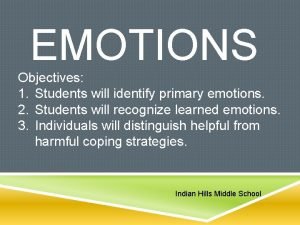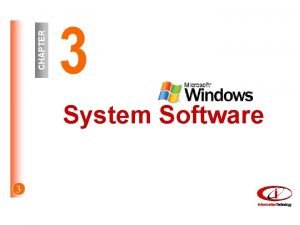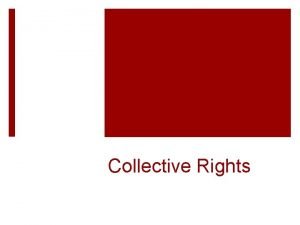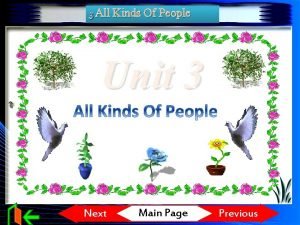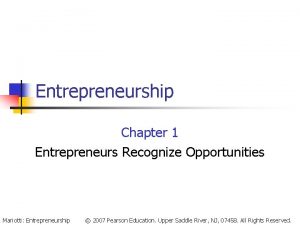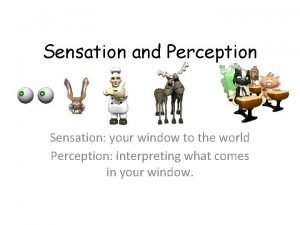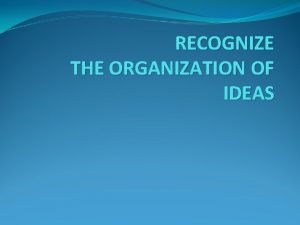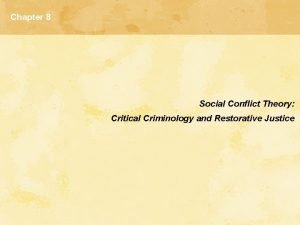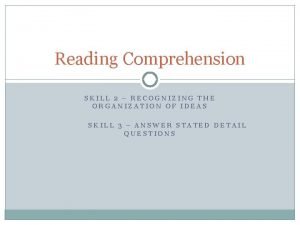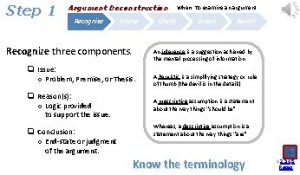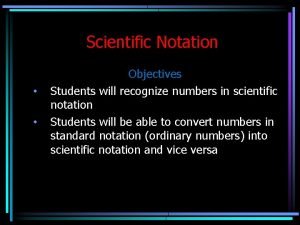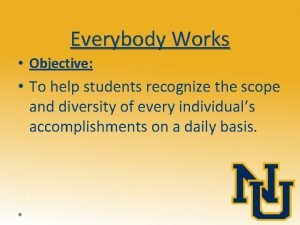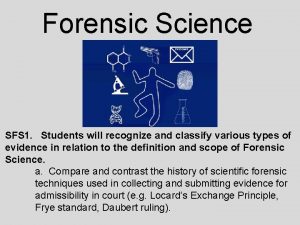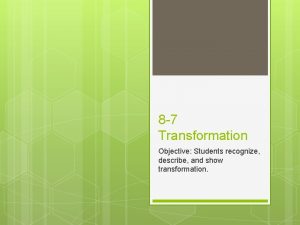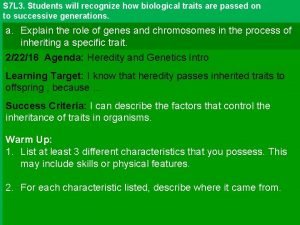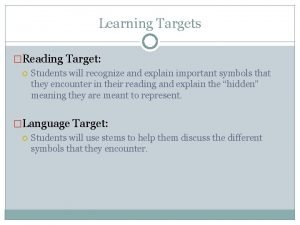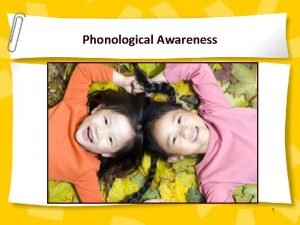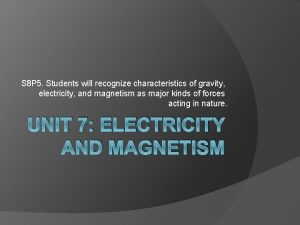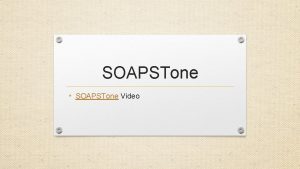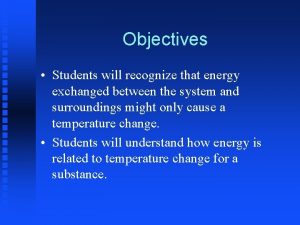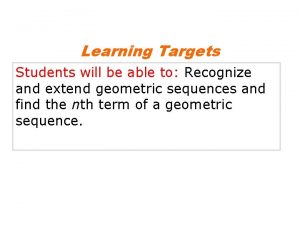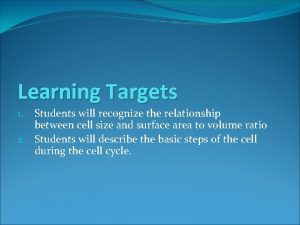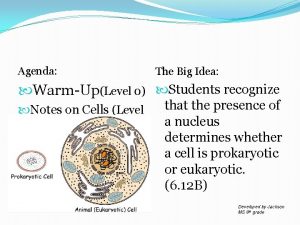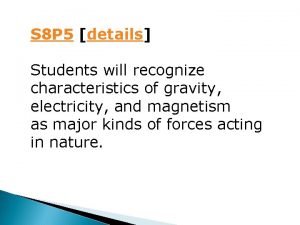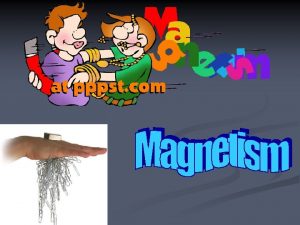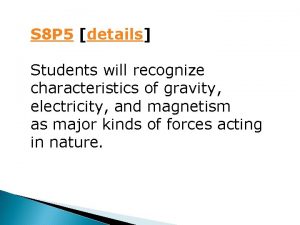S 3 L 2 Students will recognize the





























- Slides: 29

S 3 L 2. Students will recognize the effects of pollution and humans on the environment. a. Explain the effects of pollution (such as littering) to the habitats of plants and animals. b. Identify ways to protect the environment. • Conservation of resources • Recycling of materials

• Living and nonliving things interacting with one another. • List some living and nonliving things • An Ecosystem is all the living and nonliving things that exist and interact in one place. • Conservation • brainpopjrconservation

• People change their ecosystems. • What are some ways that people do this? • Human changes make it hard for some organisms to survive. • What is an organism? – An organism is any living thing. Organisms need air, water and a way to get energy.

• Pollution happens when people do not throw out their waste correctly. • Pollution can affect both land water ecosystems. • Some sea animals can get tangled up in garbage. This can injure or kill the animals. • Pollution

• Hazardous waste is waste that can pollute the environment. • Hazardous waste is dangerous to people and other organisms. • Motor oil, paint and insect sprays are all hazardous wastes.

• Oil is so hazardous and big spills are very dangerous to the environment. • Can you think of why? • Oil spills usually happen as the oil is being moved and they are extremely hard to clean up.

• What is the difference between litter and hazardous waste?

• We can help ecosystems by using biodegradable materials, recycling and practicing green agriculture. • Biodegradable materials are things that break down easily in the environment. • Paper and wood are biodegradable materials. • Brainpopjrrecycle

• Scientist are trying to find ways to make things more biodegradable. There is now biodegradable plastic and cloth.

• What is a landfill? • A landfill is a large outdoor place used to bury wastes. • Today landfills are lined with plastic. With plastic liners, no hazardous waste can leak into other ecosystems.

• What do you think would happen if the landfills were lined with wood instead of plastic?

• What do you think are some problems with landfills? • Some things in a landfill do not break down because the garbage is packed so tightly that there is little air and water. • Many tiny organisms that break things down cannot live there.

• Another problem is their size. No one wants to live near a landfill. They are very large and a lot of the times smell real bad.

• Decomposers are important to ecosystems. • A decomposer is an organism that beaks down the remains of dead organisms. • It breaks down materials made from once living things. • Decomposers


• Decomposers get rid of unwanted materials that are biodegradable. • Decomposers are extremely helpful to people and the earth. Can you think of why? • People can help to make decomposers grow. HOW? ? ?

• They can do this by making a place where natural materials, including garbage can become compost. • Compost is decayed material that is used to make the soil rich.

• They can do this by making a place where natural materials, including garbage can become compost. • Compost is decayed material that is used to make the soil rich.

• So what can you compost? Tons of things – from garden lawn clippings, to raked leaves, to organic kitchen waste like vegetable peelings and coffee grinds. You can even compost shredded paper and toenail clippings. • Don’t compost any dead plants that have died from being infected by a disease or infested by insects. Diseased plants can spread the disease to your entire compost pile, and make for a big pile of unhealthy garbage. • Don’t compost meat or bones or anything that might attract vermin or maggots while its composting. • Animal waste is a no-no for compost piles, and that includes the human animal. Dirty diapers are not for the compost pile, and neither are the contents of your cat’s litter box.

• Compost is partially decomposed organic matter. It is dark and easily crumbled and has an earthy aroma. It is created by biological processes in which soil-inhabiting organisms break down plant tissue. When decomposition is complete, compost has turned to a darkbrown powdery material called humus. • Why do we know the word humus? ? ?

• Rainforests are very important. • They are the home of plants and animals. • They have many resources. • • We get things like medicines, fruits and nuts from the rainforests. Brainpopjrrainforest Frogs in the rainforest

• Many rainforests are begin cut down. • People do this for many reasons. They need wood for houses and paper. Some use the land for farming and others use it for raising animals. • Animals in the rainforest

• Pictures of destruction of the Rainforest

• Rainforest could be saved. The resources from the rainforests could provide money. The fruits and nuts and medicines could pay local people more then farming and raising animals. • Ecotourism is another way to help. Ecotourism is visiting natural habitats and helping people keep them as they are. • Tourists pay to visit the rainforest and they money could help to save it.

• Forests, grassland deserts can be turned into farms. • Some farmers use weed killers that pollute the environment. • Fertilizers are used on crops to help plants grow. • Fertilizers can get into the water and the water becomes full of plants and this causes the fish to die.

• There are ways to farm that do not hurt the environment. • This is called Green Agriculture. • Green agriculture helps save water, improve soil and keep the ecosystem safe.

• One kind of green agriculture is organic farming. • Organic farming uses only things that naturally occur in an ecosystem. • Harmful fertilizers or products that kill weeds are not used. • Another kind is crop rotation. This means that a farmer will grow a different crop in the same place every year. • When the farmer does this, the soil stays rich and fertilizers are not needed.

• Yet another kind of green agriculture included growing cover crops. • These are crops that are grown for a year and then mixed into the ground. • This makes the soil rich, saves water and keeps soil from washing away.

• The goal of zero waste is to recycle and reuse items so that very little new waste is made. • Why do you think this would be helpful? • Think about your everyday life and the things you use. Could you keep using something instead of getting a new one each time? • Glass, paper, and plastics are some things that can be recycled. • There are many things that can be made from recycled materials.
 Champion of filipino students rizal
Champion of filipino students rizal What does beowulf do before he swims back to land?
What does beowulf do before he swims back to land? Refusing to recognize an emotion or problem
Refusing to recognize an emotion or problem Chapter 17 oral pathology short answer questions
Chapter 17 oral pathology short answer questions Objective of operating system
Objective of operating system Israel palestine
Israel palestine What laws recognize the collective rights of the metis
What laws recognize the collective rights of the metis Lars didn't recognize patrick logan because
Lars didn't recognize patrick logan because From where does kat recognize the girl with red hair?
From where does kat recognize the girl with red hair? Example of useful and harmful
Example of useful and harmful Entrepreneurship chapter
Entrepreneurship chapter Cones are to vision as ____ are to audition
Cones are to vision as ____ are to audition The organization of ideas
The organization of ideas I can recognize polynomial function yes or no
I can recognize polynomial function yes or no Conflict theory criminology
Conflict theory criminology Code of ethics for professional teachers philippines
Code of ethics for professional teachers philippines Skill 2 recognize the organization of ideas
Skill 2 recognize the organization of ideas ưu thế lai là gì
ưu thế lai là gì Thẻ vin
Thẻ vin Tư thế ngồi viết
Tư thế ngồi viết Cái miệng bé xinh thế chỉ nói điều hay thôi
Cái miệng bé xinh thế chỉ nói điều hay thôi Các châu lục và đại dương trên thế giới
Các châu lục và đại dương trên thế giới Bổ thể
Bổ thể Từ ngữ thể hiện lòng nhân hậu
Từ ngữ thể hiện lòng nhân hậu Tư thế ngồi viết
Tư thế ngồi viết Thứ tự các dấu thăng giáng ở hóa biểu
Thứ tự các dấu thăng giáng ở hóa biểu Thơ thất ngôn tứ tuyệt đường luật
Thơ thất ngôn tứ tuyệt đường luật Chúa yêu trần thế
Chúa yêu trần thế Sự nuôi và dạy con của hươu
Sự nuôi và dạy con của hươu đại từ thay thế
đại từ thay thế


